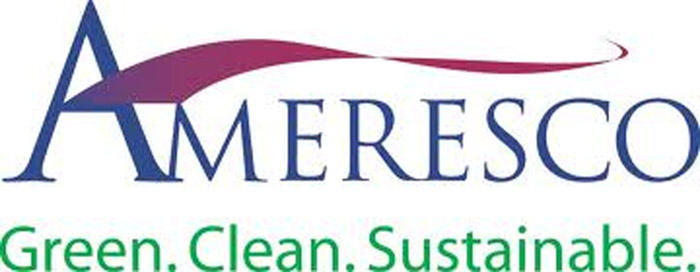
by Web Editor | Mar 26, 2012 | Update
Following a series of performance tests, Ameresco, Inc. has received its Final Acceptance Certificate from the U.S. Dept. of Energy Savannah River Operations Office for the now operational DOE Savannah River Site (SRS) Biomass Cogeneration Facility (BCF).
The 20 MW facility is on schedule to provide the necessary process steam to the site as well as provide 30% of power for the site once fully operational in 2012.
The facility will convert 325,000 tons of fuel per year, including local forest residue and wood chips.

by Web Editor | Jan 26, 2012 | Taking Stock
Story by Dan Shell,
Managing Editor
With its recent proposed revisions to the Boiler Maximum Achievable Control Technology rules that were released in early December, the U.S. Environmental Protection Agency (EPA) has taken a step forward in addressing major operational concerns across a variety of industries, including all facets of the wood processing industry.
Those concerns about potential new and highly expensive boiler compliance costs stemmed from initial MACT proposals EPA had released a year or so earlier. The potentially costly requirements had spread a large level of uncertainty across the industry, which is already struggling with historically soft markets due to the housing downturn and sluggish economy.
The biggest positive development for the forest products industry is that wood-burning boilers in almost all cases will not be subject to the much more stringent requirements of “solid waste” fired boilers—in effect industrial incinerators—which include a large list of hazardous pollutants that must be monitored, along with expensive control requirements.
Most pertinent to the forest products industry is that instead of lumping its boiler operations in with other industries in a “one size fits all” burdensome regulatory structure, EPA will seek to establish new emissions limits for particulate matter that are different for each solid fuel subcategory (such as biomass and coal, for example) that better reflect “real-world operating conditions.”
Along those same lines, EPA is proposing increased flexibility in compliance that may remove continuous monitoring requirements for biomass boiler units, plus carbon monoxide limits based on stack testing or continuous monitoring data instead of continuous monitoring systems.
The much-needed flexibility inherent in the revised proposals reflect a positive EPA response to industry concerns that boiler rule regulations proposed in 2010 were unachievable and unreasonable to the extent of causing large scale industrial plant closures and a quick halt to many new projects or planned expansions at existing facilities. According to the Biomass Thermal Energy Council (BTEC), the revised proposals are estimated to be 50% less costly than before.
Yet many obstacles remain: According to the American Forest & Paper Assn., the boiler MACT rules are among the “most complex MACT standards developed.” And while EPA’s revised proposals are an important step in writing a more reasonable set of regulations, concerns remain that the rules are still open to challenge in the courts, adding another level of uncertainty.
Another bit of good news is there’s still time to comment on the revised proposals, at least through February 2, by both email and fax. Panel World readers can easily find contact and comment information through major trade groups such as APA—The Engineered Wood Assn., Composite Panel Assn. or AF&PA. Do-it-yourself commenters can submit comments online by going to www.regulations.gov.
Needless to say, it’s exceedingly difficult to hit a home run with the EPA when grappling with any regulatory issue, but our industry helping to make noise about the original unreasonable proposals has helped remove at least one layer of uncertainty in the process. With industry’s input, there’s still time to contribute to another positive result.

by Web Editor | Nov 26, 2011 | Taking Stock
Story by Rich Donnell,
Editor-in-Chief
It boggles my mind that this is the last issue of 2011 for Panel World magazine. Obviously Father Time has no concern over whether markets are up or down. While “flat” might be a better description for the building markets in 2011, I am proud to say that Panel World’s financial performance through its six issues in 2011 was up several percentage points over 2010. This is a direct result of the confidence our advertisers and readers continue to maintain for the magazine. Some companies advertise because they’re emphasizing a specific product or technology. Other companies advertise because they want to promote their image and their professionalism. However your company may have approached it, we thank you for counting on us to deliver your message to the right people around the world. We plan to continue to live up to if not exceed your expectations.
Of course just as there would be no magazine without an advertising base to support it, there would be only blank pages in the magazine without articles to fill them. While we fill many of those pages with various news releases, new product developments and new project announcements, the bread and butter has always been “the mill story,” when our people visit your mill, talk to your people, photograph your operations and tell your story in Panel World.
Not all of you reading this allow us to visit your mill. Perhaps you think you have something proprietary going on. Or perhaps you’re scared to reveal an operation that’s not performing as it should, whose safety record may be lacking a little, whose quality control isn’t up to par, whose employees aren’t quite buying into your methods. I guess if that was the case, I wouldn’t allow us to visit either.
But there are many more companies who do welcome us in, who are proud to promote their new projects and showcase the talents of their work force. We visited numerous such companies in 2011, including:
- Peninsula Plywood in Port Angeles, Wash.
- Commonwealth Plywood in Whitehall, NY
- Flakeboard America MDF in Malvern, Ark.
- RoyOMartin in Chopin, La.
- Darlington Veneer in Darlington, SC
- Murphy Company in Rogue River, Ore.
Many other companies—too numerous to mention here—regularly work with us as well, and we’ll again be at their doorsteps in the near future. A special thank you goes to all of these companies and their personnel.
Meanwhile if you’re looking for words of wisdom from me as the 2011 calendar closes, I can only point to the Projects section of this issue. There you’ll read about LP installing new air emissions control technology at its OSB plant in Sagola, Mich., and Uniboard doing the same at its particleboard plant in Moncure, NC; West Pine MDF enhancing its fire protection system on its press at Quesnel, BC; Paneles Arauco adding a value-added sawline in Nueva Aldea, Chile and Richmond Plywood doing likewise in Richmond, BC; and Medite Europe implementing a new dry resination system in Clonmel, Ireland.
Where’s the message? It’s simple: During good times or bad times, or very average times, your operation should follow Father Time’s example and never sit still.

by Web Editor | Sep 6, 2011 | Update
International Paper Announces Agreement To Acquire Temple-Inland
International Paper and Temple-Inland, Inc. announced on September 6 that they have entered into a definitive merger agreement under which International Paper will acquire all of the outstanding common stock of Temple-Inland for $32.00 per share in cash, plus the assumption of $600 million in Temple-Inland’s year-end debt. The total transaction value is approximately $4.3 billion.
As contemplated by the merger agreement, International Paper will terminate its existing tender offer to acquire all of the outstanding common shares of Temple-Inland for $30.60 per share, and Temple-Inland will hold a special meeting of its stockholders to vote on the transaction. In addition to the approval of Temple-Inland’s stockholders, the transaction is subject to customary closing conditions, including antitrust approvals.
The merged companies are expected to yield synergies of approximately $300 million annually within 24 months of closing, derived primarily from the areas of operations, freight, logistics, selling expense and overhead. The companies have a shared focus on low-cost mills, complementary converting systems and high levels of box integration. Temple-Inland’s products and manufacturing facilities are an excellent strategic fit with International Paper’s current offerings and facilities.
The combination, which has been approved by the boards of both companies, brings together two strong North American corrugated packaging businesses to create an even stronger company. It offers numerous benefits for the shareholders and customers of both companies, and is consistent with International Paper’s focus on achieving and sustaining cost of capital returns throughout the cycle. The transaction is expected to be accretive to International Paper’s shareholders in year one after closing. It is expected to close in the first quarter of 2012.
The monthly Panel World Industry Newsletter reaches over 3,000 who represent primary panel production operations.
Panel World is delivered six times per year to North American and international professionals, who represent primary panel production operations. Subscriptions are FREE to qualified individuals.
Complete the online form so we can direct you to the appropriate Sales Representative. Contact us today!

by Web Editor | Mar 26, 2011 | Taking Stock
EWP Producers Are Ready To Run
 Article by Rich Donnell, Editor-in-Chief, Panel World (2011)
Article by Rich Donnell, Editor-in-Chief, Panel World (2011)
You’ll notice a short article in this issue on the current state of engineered wood products. One of the comments I’ve heard to best sum it up comes from Brian Luoma, Vice President, Engineered Wood Products, Louisiana-Pacific Corp. Luoma said, “We’ve built this great race car. We’re ready for the race to begin.”
Luoma was referring to LP’s plant at Houlton, Me., which was one of LP’s early OSB plants, but which in recent years LP has converted to laminated strand lumber (the plant can still produce OSB). The product is intended to complement as well as substitute for certain LVL applications, and obviously for lumber applications. LP is excited about the plant, about the product, and about its people who are behind it. But as Luoma alluded to, the building products market needs to pull in the yellow flag and start waving the checkered one. Many EWP producers are in this same fix. Waiting. The challenge is a little steeper for LP, in that while traditional EWP producers, including LP, are waiting for the market to pick up steam, LP is also waiting to see how its new product will be received in a real builders market.
I’ve always compared the competition within the EWP industry to a chess match. To even sit down at the table you have to know what you’re doing; understand all the pieces and know their capabilities and limitations (the knight can do what?); quickly form an idea of how your EWP competitor is approaching this same match. The game often progresses very slowly, incrementally, delicately. Your best laid plan may be stymied and you have to regroup. Or perhaps your plan continues to evolve with absolute clarity until you’ve forced your opponent into an inescapable corner, and maybe even before he knows it. Alas, but there can be sudden surprises. A flurry of activity. You’ve overlooked something—the knight no less. Just when you thought you were winning the day, the day is lost.
Meanwhile, the traditional commodities guys have been slugging it out on the checkers board. A lot jumping and crowning. This is the third day at Gettysburg mentality—Pickett’s charge! Here I am and I’m coming. Well, here I am, come on. When the checkers game ends, the two opponents drink out of the same pond. When the chess match concludes, the opponents, win or lose, return to their respective laboratories to make themselves better.
But I get the sense that the EWP producers are about fed up with all of this jostling for position. They’re tired of playing scrimmage games against each other. They’ve fine-tuned themselves about as finely as they can. To return to Luoma’s analogy, they’re ready to see how they’ll perform in the big race.
The monthly Panel World Industry Newsletter reaches over 3,000 who represent primary panel production operations.
Panel World is delivered six times per year to North American and international professionals, who represent primary panel production operations. Subscriptions are FREE to qualified individuals.
Complete the online form so we can direct you to the appropriate Sales Representative. Contact us today!






 Article by Rich Donnell, Editor-in-Chief, Panel World (2011)
Article by Rich Donnell, Editor-in-Chief, Panel World (2011)